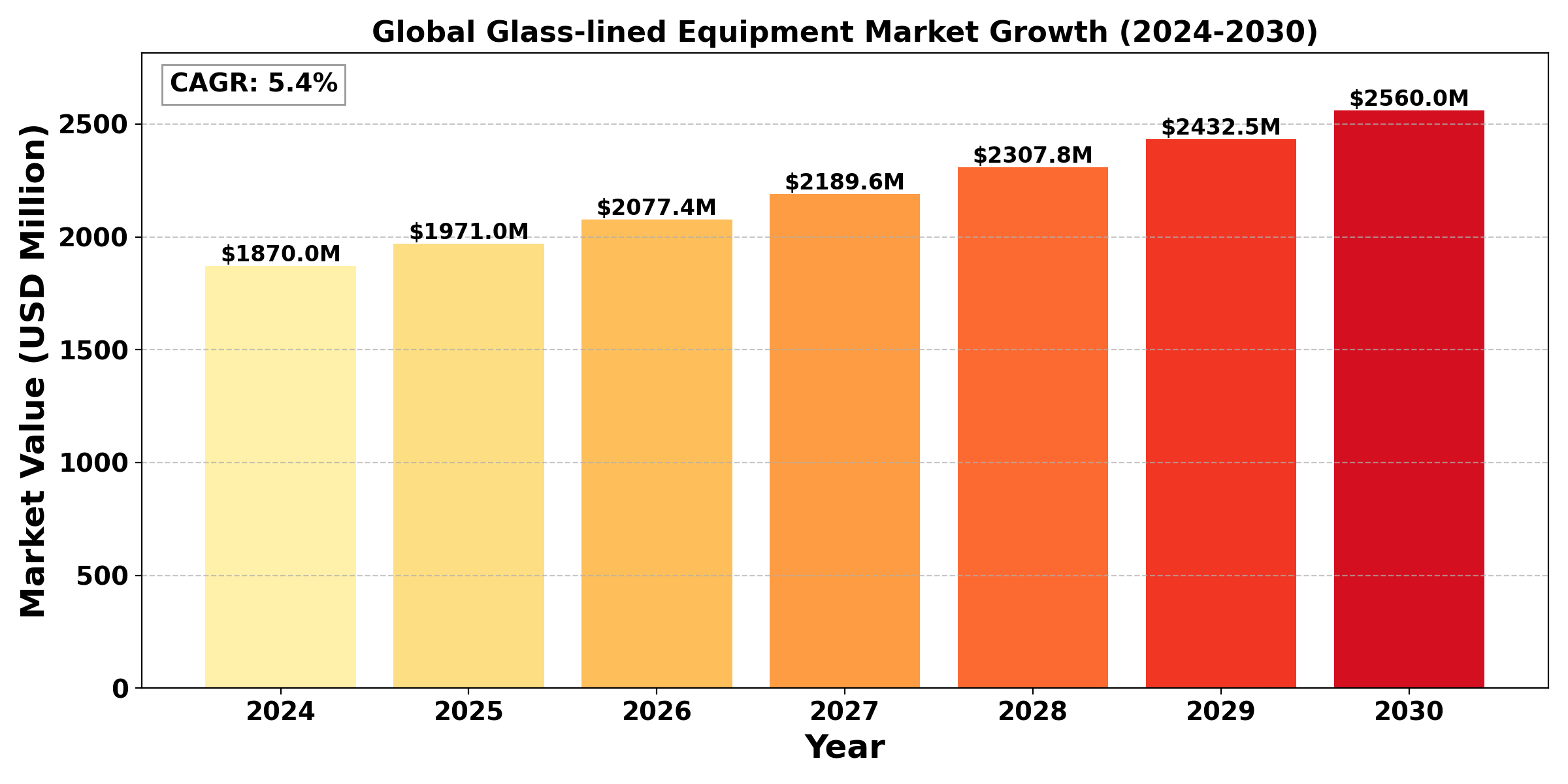TOP CATEGORY: Chemicals & Materials | Life Sciences | Banking & Finance | ICT Media

Download Report PDF Instantly
Report overview
The global Glass-lined Equipment market size was valued at US$ 1.87 billion in 2024 and is projected to reach US$ 2.56 billion by 2030, at a CAGR of 5.4% during the forecast period 2024-2030.
The United States Glass-lined Equipment market size was valued at US$ 423.6 million in 2024 and is projected to reach US$ 564.5 million by 2030, at a CAGR of 4.9% during the forecast period 2024-2030.
Glass-lined Equipment refers to industrial vessels and components coated with a layer of glass, combining the corrosion resistance of glass with the structural strength of metal, widely used in chemical, pharmaceutical, and food processing industries.
The global Glass-lined Equipment market is experiencing steady growth, driven by expanding chemical and pharmaceutical industries and increasing demand for corrosion-resistant processing equipment. In 2023, total production capacity reached 125,000 tons, with reactors accounting for 40% of market value. The storage tanks segment is the fastest-growing at 6.5% annually. The market saw a 15% increase in demand for large-capacity glass-lined reactors (>20,000L) in 2023, reflecting the trend towards scaled-up production in the chemical industry. Borosilicate glass linings dominate with an 85% market share, but advanced ceramic-glass composite linings are growing at 8% annually due to their enhanced thermal shock resistance. Asia Pacific leads with a 45% market share, driven by rapid industrialization in China and India, while Europe is the fastest-growing region at 6.2% CAGR. The industry is focusing on developing glass lining technologies for complex geometries, with a 25% increase in R&D investments for improved glass-to-metal bonding techniques.

Glass-lined equipment is a corrosion resistant material used in the production of pharmaceuticals, polymers, and other specialty chemicals.
This report provides a deep insight into the global Glass-lined Equipment market covering all its essential aspects. This ranges from a macro overview of the market to micro details of the market size, competitive landscape, development trend, niche market, key market drivers and challenges, SWOT analysis, value chain analysis, etc.
The analysis helps the reader to shape the competition within the industries and strategies for the competitive environment to enhance the potential profit. Furthermore, it provides a simple framework for evaluating and accessing the position of the business organization. The report structure also focuses on the competitive landscape of the Global Glass-lined Equipment Market, this report introduces in detail the market share, market performance, product situation, operation situation, etc. of the main players, which helps the readers in the industry to identify the main competitors and deeply understand the competition pattern of the market.
In a word, this report is a must-read for industry players, investors, researchers, consultants, business strategists, and all those who have any kind of stake or are planning to foray into the Glass-lined Equipment market in any manner.
Global Glass-lined Equipment Market: Market Segmentation Analysis
The research report includes specific segments by region (country), manufacturers, Type, and Application. Market segmentation creates subsets of a market based on product type, end-user or application, Geographic, and other factors. By understanding the market segments, the decision-maker can leverage this targeting in the product, sales, and marketing strategies. Market segments can power your product development cycles by informing how you create product offerings for different segments.
Key Company
Market Segmentation (by Type)
Market Segmentation (by Application)
Geographic Segmentation
Key Benefits of This Market Research:
Key Reasons to Buy this Report: